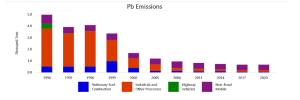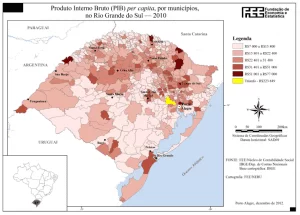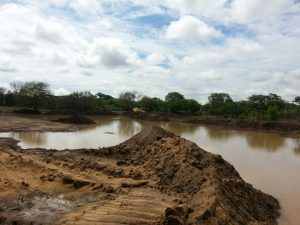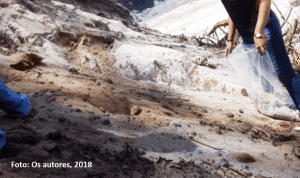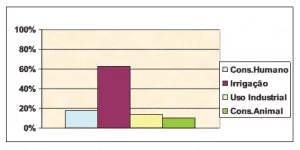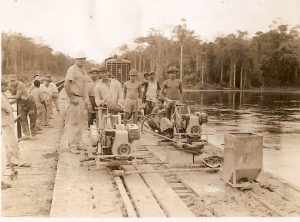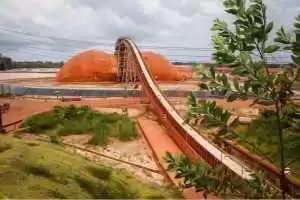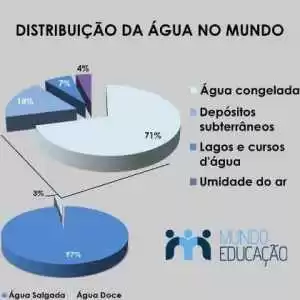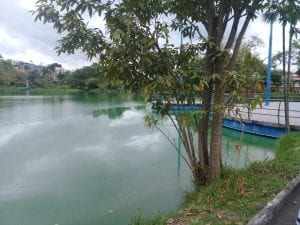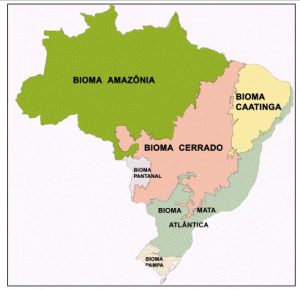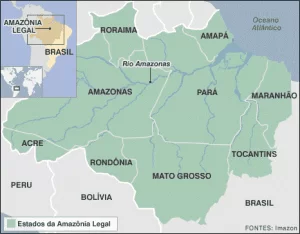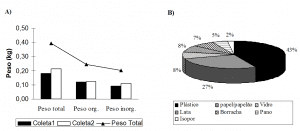ORIGINAL ARTICLE
FERRAZ, Carlos Alberto Leitão [1]
FERRAZ, Carlos Alberto Leitão. Notes on agriculture in the evolution of economic thought. Revista Científica Multidisciplinar Núcleo do Conhecimento. Year 05, Ed. 08, Vol. 16, pp. 107-125. August 2020. ISSN: 2448-0959, Access link: https://www.nucleodoconhecimento.com.br/environment/agriculture-in-the-evolution
ABSTRACT
The article analyzes agriculture in the evolution of economic thought. Evidencing the diverse specificities and issues of the agricultural sector according to the vision of the main economic schools in the course of the evolution of economic theory. How each of the economic currents interpreted the role of this sector in the broader aspect of the economy. It seeks to synthetically demonstrate how the history of economic thought theoretically incorporated, in its main aspects, the changes that occurred in the functions of agriculture throughout its development. This is a bibliographic review study, based, whenever possible, on the original writings of the main authors of each analyzed economic chain. The text concludes that, throughout the evolution of economic science, agriculture has always been present in the main studies on economic thought, in a different way, accompanying its role in the economy in the course of its development.
Keywords: Evolution, thinking, economic, agriculture.
1. INTRODUCTION
In the early days of humanity, men’s economic activity was limited to gathering, hunting and fishing. The men lived in packs, that is, they were gregarious. Hunting work could result in the prey and / or slaughter of an animal that would allow it to feed the components of a group for days or even weeks or result in failure. So that the group did not get the necessary food for their subsistence. The same can be said of fishing, given the rudimentary instruments for its effectiveness. The collection, in turn, carried out by the women, was successful in its goal with the collection of enough vegetables to supply the group for a few days.
In this way, man maintains, although predatory, a close relationship with nature. However, this relationship is one of dependency. For it is she who supplies him with the food necessary for his existence.
The nomadic existence imposed by natural changes is slowly beginning to change. Gradually, the man through observation began to intervene in the reproduction and selection of animals and vegetables that would serve him as food. This initial mastery of nature and the domestication of animals, during the Neolithic period, gave rise to agriculture. From there, the man will go from nomadic to sedentary, will control his own food supply.
The expansion of agriculture will lead man to settle in a certain area and to appropriate the soil. Thus, the social division of labor activities, the division of society into social classes and the state emerges and consolidates.
However, it is with the advent of the First Industrial Revolution or the English Industrial Revolution that man breaks the dependence on natural forces to carry out his productive work. In the periods that preceded the first industrial revolution, the mechanisms and machines used in the production process depended in their propulsion on the forces of nature, such as rivers and winds, the strength of animals or human strength. But James Watt’s introduction of the steam engine radically transforms this dependency: water vapor becomes a source of driving force. This made it possible to determine the duration of the production cycles and make them continuous and adapt them to changes in demand.
But it was not only in the aspect of technological advancement that the industrial revolution brought about radical changes. Based on it, the purpose of economic activity is to obtain the expansion of capital through the production of goods and not to produce goods to meet human needs. Thus, as agricultural capital and commercial capital were subordinated to industrial capital, the latter became, from a certain moment, subordinated to financial capital.
Thus, this text intends to demonstrate synthetically how the history of economic thought theoretically incorporated, in its main aspects, the changes that occurred in the functions of agriculture during its development. To this end, this article, after this introduction, is structured in the following sections: agriculture in antiquity, agriculture in feudalism, the emergence of the market-oriented economy, agriculture as the only source of economic surplus and wealth, agricultural development in the classics : Smith, Ricardo and Malthus, the subordinate role of agriculture, the neoclassical approach: the end of agriculture as a specific sector in economic analysis, from the agricultural approach to the agrarian approach and the final considerations.
2. AGRICULTURE IN ANTIQUITY
The analysis of agriculture by the economic view in the Greek period must be understood according to the philosophical parameters that guided the economic order of the time: I – Predominance of the general over the particular, that is, the individual well-being subordinated to the collective well-being; II – Ethical equality, in this respect the ideal Greek state would be composed of a certain stable number of inhabitants, making it easier to preserve the social order; and III – Contempt for wealth, so the essential aspect of the human being is his soul, followed by body care and, finally, wealth.
Philosophical thinking in Greece will greatly influence the economic views that arose at the time. The individualist current that opposes the reasons of the state and those of the individual, criticizes the contempt for wealth and initiates the rehabilitation of labor activity. Another individualist strand, whose main exponent was Aristotle, criticizes Plato’s communism. However, even disagreeing with Plato, as to the form of social organization advocated by that thinker, Aristotle approaches him in relation to contempt for private property and individual freedom. This view of the economy proposes demographic control to maintain the predominance of the state over the individual. In addition to these two views of the economy cited, there was the socialist current that had Plato as its main formulator. He advocates the structuring of an ideal state, where justice prevails and the citizen dedicates the maximum amount of time to political activity and philosophy studies. In this way, economic nuances must be restricted to the minimum that is necessary. Manual labor is not included in this socialist structure, traders and craftsmen are disregarded and the farmer, in turn, is relevant to the system.
Thus, in its embryonic or pre-scientific phase, economic science attributed a prominent importance to the agricultural sector in the economy. In addition, he saw agriculture as an activity that harmonized with nature. In this context, in the economic thought of that time, agriculture was, for all intents and purposes, a central and ethically superior economic activity. (CORAZZA and MARTINELLI JR., 2002, p. 11).
3. AGRICULTURE IN FEUDALISM
The medieval economy can be divided into two economic periods. One that comprises the 5th to 11th centuries, where the invasions of the barbarians occur, the decay and extinction of the old economy and the economic fragmentation of feudalism, then in its fullness. The commercial exchange, when it occurs, takes place in the locality, being rare the exchanges made outside the domains of the fiefdom. The other period extends from the 11th to the 14th century, which represents a phase of commercial growth. From the 11th century onwards, after a decadent stage, exchanges and trade resurfaced. Concomitantly, specialized trades expand, the division of labor increases production, the market expands.
During the medieval period, the Catholic Church had a significant influence on the life and ideas of the entire population. At the level of economic ideas, this science will seek in the Christian religion the moral conception of moderation, which will greatly influence judgments about profit and property.
Private property was seen as legitimate. However, this legitimacy was not absolute. It was conditioned by the individualistic character, which allows man to appropriate productive goods, guaranteeing his satisfaction, because through this he can form necessary reserves in the case of future eventualities. It is also conditioned, socially, by pointing out that the abusive right of its owner must be prevented when it implies abusive attitudes of the owner at the expense of collective well-being.
The influence of Christian morality will contribute to the notion of fair price, that is, for the exchanges to take place with balance, according to the interests of the negotiating parties involved, it is necessary that the price be fair. Scholastics will consider as fair price that reduced value that allows the consumer to buy the product normally and the seller to receive a sufficient price for his product that interests him to sell and consequently guarantee him a decent life. The notion of fair price will be applied to the wage that must allow the worker and his family to live according to the tradition of their social class and local customs. At the same time, the notion of fair price is also incorporated into the concept of profit.
The economy of the Middle Ages was essentially an agricultural and self-sufficient economy, in which in general the majority of the population’s needs were met in the fiefdom itself. Thus, the predominant role of agriculture in relation to handicrafts and commerce was natural.
4. THE EMERGENCY OF THE ECONOMY FOCUSED ON THE MARKET
“The early years of the 16th century in Europe mark the decline of the feudal structure and, concomitantly, the emergence of the capitalist system as a striking feature.” (HUNT and SHERMAN, 1995, p.32). During this period, social and economic changes took place, which gradually unlocked the path for the emergence, expansion and consolidation of capitalism. The constant European demographic growth, the fencing of the fields used as communal pastures initially in England, scientific progress, the migratory movement towards the cities stimulated the dissolution of the old feudal ties that, still, persisted. At the same time in the nation-states, the correlations between political forces changed. The political alliance between kings and capitalists removed powers from the feudal nobility in several crucial areas, such as the trade and production sectors, according to Hunte and Sherman (1995, p.36). It is in this scenario that the economic doctrine of Mercantilism emerges. According to Sandroni (1994, p.219):
(…) This school, which marks the period between the 16th and 17th centuries, was characterized by the following economic principles: I
– The state must expand the well-being of its population, even if it affects other countries and colonies; II – A nation’s economic wealth depends on demographic expansion and the accumulation of precious metals; III – Favorable trade balance; and IV – Economic preponderance of commerce and industry in relation to agriculture.
Rezende (2005) highlights the practice of state interventionism in the economy in mercantilism. For this author, the most striking features of this economic trend were: I – Metallism, that is, the prosperity and wealth of a country would result from the amount of gold and silver that it accumulated; II– The volume of exports always exceeds that of imports; III – Economic nationalism, which consisted of encouraging the national secondary sector; and IV – Colonialism.
Second, also, Rezende (2005), the efforts of the mercantilist countries in self-sufficiency and in the production of manufactured products encountered difficulties in obtaining certain raw materials that, for geoclimatic reasons, could only be produced in tropical areas. However, this obstacle could be overcome if the central countries had colonies. In this way, the main objective of the mercantilist policy could be reached, which was to obtain precious metals, or else, to be able to exploit goods for their profitable commercialization in the European market.
Therefore, although agriculture is not seen as the main activity of the economy, it underlies mercantilist economic thinking. In addition, it emerges in this doctrine as a factor, although not direct, but important for achieving the scope of mercantilist policy.
5. AGRICULTURE AS THE ONLY SOURCE OF ECONOMIC SURPLUS AND WEALTH
In the transition period between the decline of feudalism and the rise of commercial capitalism, the view of the role of agriculture in the economic system undergoes changes. And this change in the role of agriculture in the economy occurs with the Fisiocrata economic school.
The physiocrats were a group of French economists whose main exponent was François Quesnay. For this economic school, only nature, that is, the land is productive, with the capacity to multiply a grain of beans in many other grains. Sectors such as industry and commerce, although important, only carry out the transport and transformation of the product originating in nature. In its theoretical structure, it divided society into three classes: I – The productive class; II – The class of owners; and III – The sterile class).
For Quesnay:
The nation is reduced to three classes of citizens: the productive class, the class of owners and the sterile class. The productive class is the one that makes the nation’s wealth reborn, by cultivating the territory, advances expenses with agricultural work and pays the rents of the landowners annually. This work includes all the work and expenses incurred in agriculture, up to the sale of the products at first hand; by this sale, the value of the annual reproduction of the nation’s wealth is known. The class of owners comprises the sovereign, the landowners and the decimators. This class subsists on the income or net product of the cultivation of the land, which I pay it annually for the productive class, after it has deducted, from the reproduction that makes each year reborn, the wealth necessary to repay its annual advances and to maintain its exploration. The sterile class is made up of all citizens engaged in services and jobs other than agriculture, and whose expenses are paid by the productive class and the class of owners, who in turn derive their income from the productive class. (QUESNAY, 1983, p. 258).
Thus, in this work Quesnay presents the income flow model between these sectors of the economy. Owners and farmers purchase products and services from other sectors that, in turn, return this income in the form of purchasing agricultural products. He considered that this circulation of income portrayed a natural order determined by unalterable laws as well as the laws that govern physics.
From this view, according to Sandroni (1994, p.141), “the physiocrats defended wide economic freedom, the extinction of all taxes and their replacement by a single tax on property and the state as guarantor of property and freedom economic ”.
In this way it can be understood that this economic doctrine first formulated the principles of economic liberalism. Its economic analysis is centered on production, modifying the economic analysis center that, until then, favored commercial activity. In addition, it placed agriculture as the only productive activity that generates a nation’s wealth and prosperity.
6. AGRICULTURAL DEVELOPMENT IN CLASSICS: SMITH, MALTHUS AND RICARDO
Adam Smith, author of the classic book The Wealth of Nations, published in 1776, begins to shift the centrality of agriculture in the economic analysis he occupied in the thought of the Physiocrats. Agriculture, from then on, is subordinated to the process of economic accumulation of capital in general. The theme around which the work is structured is the creation and expansion of wealth, which, according to him, stems from human work. Thus, it was not only agricultural labor that generated wealth, but all productive labor, inserted in the division of labor and specialization, which produces an economic surplus. (CORAZZA and MARTINELL JR., 2002, p.17).
However, Smith affirms the productive relevance of agricultural work in relation to artisanal and commercial work. Once the field worker produces for his livelihood and that of his family, as well as for the profitability of his employers and the income of the landowners. At the same time, this thinker, considers that industrial work tends to be more productive due to the industrial sector adapting more easily to specialization and division of labor. It follows from this analysis that the economic surplus is no longer seen as of a physical, quantitative nature, but as an exchange value or economic value created by labor.
Thomas Robert Malthus (1766 – 1834) who lived through the English Industrial Revolution, published in 1798, his best-known work Essay on the principle of population. In this work he formulates his most relevant contribution to the theory of population. According to Malthus, food production expands in an arithmetic progression while demographic growth occurs in geometric progression. implying poverty and hunger in general. This population growth could be contained through several restrictive factors such as the moral barrier, misery, addiction, in addition to other conditions, including war, plague and other diseases.
Malthus says:
{…} So, taking my postulates for granted, I claim that the population’s growth power is indefinitely greater than the land’s power to produce livelihoods for man. The population, when not controlled, grows in a geometric progression. Livelihoods grow only in arithmetic progression. A little knowledge of numbers
it will demonstrate the enormity of the first power compared to the second. By that law of our nature that makes food necessary for human life, the effects of these two unequal powers must be kept equal. This implies an obstacle that acts firmly and constantly on the population, due to the difficulty of subsistence. This difficulty must decrease somewhere and must, necessarily, be harshly felt by a large portion of humanity. (…) (MALTHUS, 1996, p. 242).
For Galbraith (1987, p. 71) “no author, until then, has placed the responsibility of poverty on the shoulders of the poor themselves as heavily as Malthus did”.
A topic of interest to great thinkers of the time, the theory of land rent, too, was the object of analysis by Malthus. For him, the land rent corresponds to the part of the total product that remains with the land owner after all payments made with the cultivation of the crop. In this way, land rent originates from a price higher than the cost of producing agricultural products, which in turn stems from 03 factors: the quality of the soil, the peculiarity of the agricultural product that creates and expands its own demand and the relative scarcity of fertile land. For Lenz (1985) Malthus makes a direct link between the existence of wealth and the generation of income from land (“as a gift from nature”), in which the landowning class is of unparalleled importance in society.
The Ricardian economic model is based on the analysis of agricultural profits due to the peculiarities of goods originating from agriculture that can, at the same time, be used as inputs or products for consumption. In this model, in which agriculture predominates, there is a broad view of the mechanisms that interfere in the production and distribution of society’s product, the stimulating and restrictive forces of economic growth, point out (CORAZZA and MARTINELLI JR, 2002, p.19) .
Agriculture plays such an important role that it affects the economy as a whole, affecting the value of food, the wages of industries, investments, profits and the expansion of the national product. In this way, agricultural performance will be able to determine the trend of economic growth and, as well as, the distribution of national income among social classes.
From this Ricardian view, the concept of land rent arises which, for Ricardo, is the portion of the product originating from the cultivation of the soil paid to the owner in order to be able to productively exploit the soil of his property. Unlike Malthus, Davi Ricardo considers that the land income originates from the rarity of this natural resource. Because the land is limited, with variable fertility and the need to incorporate inferior quality land into the agricultural production process, it is necessary to pay a rent to be able to exploit it.
7. THE UNDERLYING ROLE OF AGRICULTURE
With Karl Marx, agriculture began to play a subordinate role in the process of general capital accumulation.
According to this author:
( ) In the sphere of agriculture, the large industry acts in a more revolutionary way as it annihilates the bulwark of the old society, the “peasant”, replacing it with the wage worker. The needs for social revolution and the antitheses of the countryside are thus leveled with those of the city. In place of the more routine and irrational production, there is the conscious, technological application of science. The rupture of the original family bond of agriculture and manufacturing, which involved the childishly undeveloped configuration of both, is completed by the capitalist mode of production. But it creates, at the same time, the material assumptions of a new, higher synthesis, of the union between agriculture and industry based on their antithetically elaborated configurations. With the ever increasing preponderance of the urban population that huddles in large centers, capitalist production accumulates, on the one hand, the historical driving force of society, but on the other hand, it disturbs the metabolism between man and land, that is, the return of components of the land consumed by man, in the form of food and clothing, to the land, therefore, the eternal natural condition of permanent soil fertility. As a result, it simultaneously destroys the physical health of urban workers and the spiritual life of rural workers. But, by destroying the conditions of this metabolism, developed spontaneously, it forces it, simultaneously, to restore it in a systematic way, as a law regulating social production and in a form suitable for full human development. Both in agriculture and in manufacturing, the capitalist transformation of the production process appears, at the same time, as the martyrology of producers, the means of work as a means of subjugation, exploitation and impoverishment of the worker, the social combination of work processes as oppression organized of their individual vitality, freedom and autonomy (..) (MARX, 1996, p. 133).
Marx considered fundamental to capitalist development the creation of an internal market that would provide the development of commercial production with the social division of labor, including rural production, sustained by the division of the various procedures for processing fresh products extracted from agriculture to, then, be transformed into their own industrial sectors, returning to interact with the agricultural sector through the sale of goods, exchanging their goods for others of rural origin.
Figure 1 presents a synthesis of the transformations that occur in agriculture with the advance of capitalist relations in the countryside.
Figure 1: The process of capitalism penetrating the countryside
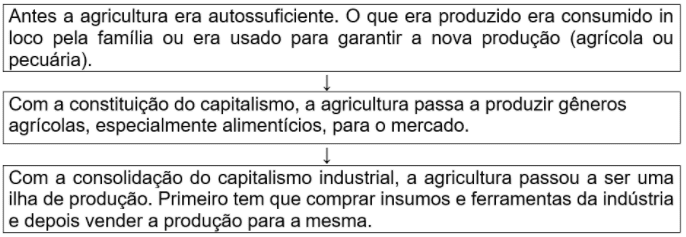
It can be seen, according to Figure 1 above, that the farmer was self-sufficient, he produced for himself and his family. Now, he markets his production to the industry, and then purchased other products supplied by that industrial sector. Gradually, the peasant lost his autonomy. The vast majority failed to adapt to the new forms of production and ended up being expelled from the agrarian space, going to concentrate on the periphery of large cities in search of jobs.
Thus, the large rural property that managed to adapt to the new techniques, and followed the pace of the development of the industry, managed to stand out and started to subordinate its production to the interests of the industry. With the expansion and consolidation of capitalism in the countryside, there is an increase in production and productivity and transformations in labor relations, in space as well as in urban areas. Marx concludes that agriculture starts to play a subordinate role to industrial capital. (CARVALHO, 2015, p. 27).
In this perspective, Marx points out the social mechanism of land rent, since agriculture depends on the mode of production of capitalism. For Amin and Vergopoulos (1997), the submission of agriculture occurs in two ways. The first, with an economic characteristic, occurs through the intervention of the dominant capital, industrial and commercial food complex, in the agricultural production process, which will impose on producers in the field the standardization of production, uniform work programs, standardization of products, concentration of merchandise collecting networks, commercialization, among other factors. The second form, of a political nature, is the class alliances between the dominant capital and the landowners. In this way, the submission of agriculture to capitalism worldwide is increasingly emphasized.
However, Silva (1981, p. 22) points out that:
(…) The penetration of capitalism in agriculture finds a barrier in land ownership. So that land ownership becomes a monopoly, preventing the transfer of other capital to this sector. This monopoly takes on two aspects. On the one hand, it stems from agricultural production on a given soil with certain characteristics. On the other hand, he gives himself for the private ownership of the land, disposing of it as he wishes. It is these two aspects that generate land income.
In turn, land income is divided into differential income and absolute income. The differential income arises from its use and exploitation. For the means of land production has certain monopolistic characteristics, such as its heterogeneity, limited and non-reproducible extension. This differential income can also be derived in two. A first that stems from the difference in location and soil fertility; and a second that comes from capital and labor investments carried out on the ground. The absolute land rent derives from the payment that the landowner receives for the exploitation of his land by the capitalists. For AQmin and Vergopoulos (1977), the land income in Marx is a product of capitalist society like the other products that this mode of production generates.
However, one way to overcome this obstacle is through technical progress, which leads to the subordination of nature itself. However, this submission does not occur completely, as it is difficult to completely oppose the actions of natural forces.
8. THE NEOCLASSIC APPROACH: THE END OF AGRICULTURE AS A SPECIFIC SECTOR OF ECONOMIC ANALYSIS
Neoclassical thinking will abandon the theory of labor value, structured analysis in social classes and the concept of economic surplus. In this perspective, the analytical structure is based on the factors of production: land, capital and labor. The function of neoclassical production is structured in a multiplicative way and with perfect substitutability of its components: capital, labor and land (natural resources). Thus, agricultural development occurs through the evolution of factors of production, which are interchangeable with each other.
In the context of agriculture, in the neoclassical analysis the first approaches to the thermal spring up from the opposition between agricultural production in developed nations and agrarian poverty in underdeveloped countries. The components to differentiate would be the technological innovations assumed by the former and the continued use of traditional productive factors by the latter. In this perspective, the contribution of Thedore W. Schultz on the theory of high yields of inputs stands out.
For this author, the efficiency of the rural productive process in developed countries is due to the modernization of the countryside and, in the case of underdeveloped countries, rural poverty stems from the low marginal productivity of traditional production factors such as land and labor, discourage farmers’ productive reinversion.
According to him:
At best, there is little likelihood of growth from traditional agriculture, because farmers have already exhausted the profitable production possibilities provided by the level of knowledge they have. Better distribution of resources, more savings, and investments restricted only to the factors of production that they have been using, will not do much to help growth. In spite of everything that has been written about how to improve the combination of factors in poor communities, there are small increases in real income to be obtained through a better distribution of existing factors. Even if such a penny saving was a perfect mixing machine in the distribution of each and every one. One of the factors at their disposal, the community would remain poor. A similar conclusion follows, with respect to the growth to be obtained with increases in the stock of such factors. They are expensive sources of additional income and therefore offer little opportunity for growth. The significance of this is that agriculture remains miserable in such circumstances. (SCHULTZ, 2005, p. 14).
In Schultz’s contribution, agriculture is considered a source of economic growth. Opposed to those economists who conditioned the expansion of economic activities from the industrial sector.
9. THE KEYNESIAN VISION: THEORETICAL IRRELEVANCE OF AGRICULTURE
John Maynard Keynes published, in 1936, his best known and most discussed work, The General Theory of Employment, Interest and Currency. The author, in this work, emphasizes the general character of his theory, in opposition to the postulates of the classic authors that, according to Keynes, only applies to a special case, that of equilibrium. (KEYNES, 1996, p.43).
Keynes’s theory is fundamentally based on the effective demand that represents the level of product that entrepreneurs intend to obtain from the employment of a certain number of workers. In other words, it is the point at which the demand function is matched with the aggregate supply. (KEYNES, 1996).
According to Keynes:
The broad lines of our theory can be expressed as follows. When employment increases, so does aggregate real income. The psychology of the community is such that when the real aggregate income increases, the aggregate consumption also increases, but not as much as the income. As a result, entrepreneurs would suffer a loss if the total increase in employment was intended to satisfy the greatest demand for immediate consumption. Thus, in order to justify any volume of employment, there must be a sufficient volume of investment to absorb the excess of total production over what the community wants to consume when employment is at a certain level. Unless there is this volume of investment, the income of entrepreneurs will be less than necessary to induce them to offer such a volume of employment. It follows, therefore, that, given what we will call the community’s propensity to consume, the level of employment balance, that is, the level at which nothing encourages entrepreneurs together to increase or reduce employment, will depend on the amount of current investment. The amount of current investment will depend, in turn, on what we will call an incentive to invest, which, as will be seen, depends on the relationship between the scale of marginal efficiency of capital and the complex of interest rates that affect loans of different deadlines and risks. (KEYNES, 1996, p. 62).
In Keynesian theory, as noted in the text above, agriculture is no longer characterized as a specific analysis category. For, Keynes starts from the understanding that the capitalist system is deeply unstable. And in these crises, the state must intervene with sufficient investments to adapt and generate the necessary demand. Thus, agriculture is not treated specifically, but is considered only as one of the components of aggregate demand. It follows that measures must be taken to increase effective demand as a whole and not only a specific segment of the economy, such as agriculture.
10. THE FIELD OF AGRICULTURE BY LARGE AGRICULTURAL CORPORATIONS
From the 1970s and 1980s, Keynesian policies, hitherto dominant in the main capitalist economies, were replaced by neoliberal economic measures aimed at releasing capital from the restrictions imposed by the welfare state. In order to reinvigorate the conditions for capital accumulation.
Neoliberalism is an updated version of liberal doctrine based on the theoretical framework of neoclassical economics. It is a set of economic ideas that preach the minimum state in the economy, that is, the non-participation of the state in the economic activity; the free flow of international capital and the free commercial market worldwide.
Neoliberal policies are put into practice, initially, in England by Margareth Tactcher (1979) and by Ronald Reagan in the USA (1981). From these countries, neoliberal policies have expanded to several countries, consolidating their worldwide hegemony.
In agriculture, the adoption of neoliberal policies took place with its restructuring based on the production of commodities, on commodities and futures exchanges and on international monopoly companies. The production of commodities aimed at transforming rural production into goods aimed at meeting world demand. Food production was aimed at those who had the money to buy it on the world market. It was no longer intended to serve a national market. Standing out among the main commodities are wheat, soy, corn, rice, cotton, coffee, live cattle, among others.
Commodities and futures exchanges have become the reference center for international commodity prices. The Mercantile Exchange (CME), better known as the Chicago exchange, is the world’s leading food exchange. It participates in the CME Group, which has the largest and most varied derivatives market in the world, where the prices of various commodities such as soybeans, wheat, live cattle, corn and others are established.
The agricultural restructuring framework is completed with the formation of large agrifood companies worldwide, which started to control the production of agricultural commodities. At the international level, four companies practically dominate the world food market: Cargill, Acher Daniels Company (ADM), Bunge Limited and the Louis Dreyfus Group. These companies act in a coordinated manner in international markets through mergers, associations, acquisitions, among other mechanisms. (OLIVEIRA, 2015, p. 240).
In agriculture, the consequences of neoliberal policies were:
a) Agri-food companies started to control the world trade in agricultural products, mainly grains, concomitant to the domination of national markets;
b) Concentration and denationalization of agro-industrial companies in several countries;
c) Standardization of the food diet for world consumption;
d) Elimination of state policies for the protection of agriculture and farmers;
e) The control by the big capital of the new techniques to be used in agricultural production;
f) Incursions of international capital to control drinking water worldwide. (STEDILE, 2010).
Tables 1 and 2 show the main characteristics of agriculture before and after the neoliberal domain. They show the great differences in the main guidelines applied to agriculture in general terms.
Table 1: Agricultural policies prior to neoliberalism


Thus, the neoliberal policy in agriculture is spreading in the rural sector with the globalization of agricultural production. For this process, under the control of financial capital, needs total freedom to expand.
FINAL CONSIDERATIONS
In the first economic analyzes, agriculture was considered an economic activity superior to the others due to providing the population with the necessary food. This emphasis on agriculture was reflected in the theoretical plan, being seen as a natural order that governed the economy.
With the physiocratic theory, the natural order of economic thought gives way to the market order. The land and its products are transformed into commodities under the aegis of capital appreciation and the law of value.
With classical thinkers, the land loses its indisputable relevance and is subordinated to the command of industrial capital, so that the origin of the surplus of the land moves to work. However, agriculture still manages to maintain dominance in the economic ideas of the period.
Neoclassical economic theory now considers the agricultural sector as the other sectors, such as labor and capital. Agriculture loses its specificity, assuming a secondary role, as a result of these authors already glimpsing the dominance of industry in the economy.
With the advent of neoliberalism, there is the dominance of financial capital and its large agri-food companies. And the globalization of agriculture.
Thus, it can be concluded that, throughout the evolution of economic science, agriculture has always been present in the main economic texts. In a differentiated and also specific way, following the role it played in the economy in the course of its development.
REFERENCES
AMIN, Samir; VERGOPOULOS, Kostas. A questão agrária e o capitalismo. Rio de Janeiro: Paz e terra, 1977. 179 p.
CARVALHO, Joelson Gonçalves. Economia agrária. Volume único. Rio de Janeiro: Fundação Ceciere, 2015, 246 p.
CORAZZA, Gentil; MARTINELLI JR, Orlando. Agricultura e questão agrária na história do pensamento econômico. Revista Teoria e Evidência Econômica, Passo Fundo, v.10, n.19, p.09-36, Nov.2002.
GALBRAITH, John Kenneth. O pensamento econômico em perspectiva: uma história crítica. São Paulo: Pioneira: editora da Universidade de São Paulo, 1989. 289 p. ( coleção novos umbrais).
HUNT, E. K; SHERMAN, Howard, J. História do pensamento econômico. 13ª. ed. Petrópolis: Vozes, 1995. 218 p.
KEYNES, John Maynard. A teoria geral do emprego, do juro e da moeda. São Paulo: Ed. Nova Cultura, 1996, 328 p.
LENZ, Maria Heloisa. A teoria da renda da terra: Ricardo e Malthus. Ensaios FEE, Porto Alegre, v.6, n.1, p.81-104. 1985.
MALTHUS, Robert, T. Princípios de economia política – consideração sobre sua aplicação prática – ensaios sobre a população. São Paulo: Editora Abril Cultural, coleção os economistas, 1996, 382 p.
MARX, Karl. O capital, volume 1.São Paulo: Editora Nova Cultural Ltda, 1996, 381 p.
OLIVEIRA, A. U. A mundialização do capital e a crise do neoliberalismo: o lugar mundial da agricultura brasileira. Geousp – Espaço e Tempo (Online), v. 19, n. 2, p. 229-245, ago. 2015. ISSN 2179-0892.
QUESNAY, François. Análise do quadro econômico. Apresentação de Roberto Campos. Tradução de João Guilherme Vargas Neto. São Paulo, Abril Cultural, 1983, coleção Os economistas.
REZENDE FILHO, Cyro de Barros. História econômica geral. 8ª ed. São Paulo: Contexto, 005. 355 p.
SANDRONI, Paulo. Novo dicionário de economia. 4ª ed. São Paulo: Best Seller, 1994. 375 p.
SCHULTZ, Theodore, W. Fatores de produção encobertos sob o título de “mudanças tecnológicas.” Revista Brasileira de Inovação, Campinas, v. 4, n. 1, janeiro/junho 2005.
SILVA, José Graziano. O que é questão agrária. 4ª ed. São Paulo: Brasiliense, 1981. 45 p.
STEDILE, J. P. A natureza do desenvolvimento capitalista na agricultura. MST, 2010. Disponível em: <http://base.d-p-h.info/pt/fiches/dph/fiche-dph-8244.html>.
[1] Economist and professor at UNEB, PhD in Regional and Urban Development (UNIFACS).
Submitted: August, 2020.
Approved: August, 2020.

